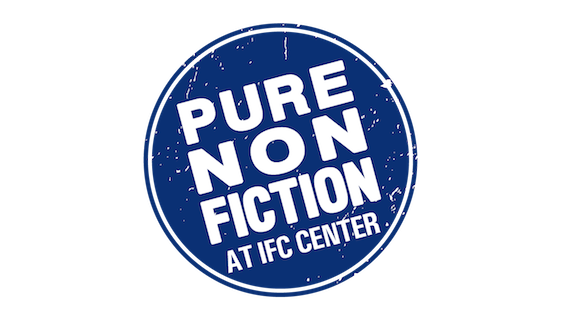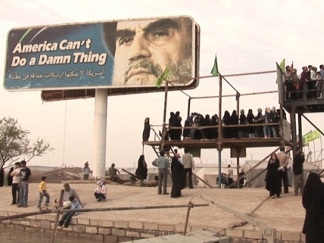Description from TIFF 2009 catalog by Thom Powers:
This year, millions of Iranians poured into the streets to support reforming their government, and their protests elicited a violent response from a militia group known as the Bassidj. Director Mehran Tamadon had the prescience to explore the world of the Bassidj in 2007, before they recently made headlines. As an Iranian citizen who now lives abroad, Tamadon cultivated access to Bassidj members over several years. Without hiding his own secular liberalism, he got bassidjis to talk about their religious and political convictions. The resulting dialogue helps us better understand the opposition to the reform movement.
In Persian, bassidj means “mobilized.” The label was adopted by volunteers who supported elite troops in the Iran-Iraq War of 1980 to 1988. Staunch in their dedication, bassidjis were known to march across minefields. After the war ended, the Bassidj remained active throughout Iranian society in mosques, schools and public services.
Tamadon divides his film into two sections. The first half takes place at battle sites along the Iran-Iraq border. In the desert landscape, strewn with broken tanks and artillery, visitors come to pay their respects to the dead. Grief and post-traumatic stress are potent factors in the country’s cult of martyrdom. The second half of the film takes place throughout the city of Tehran, from public streets to private meeting spaces. Tamadon, who trained as an architect, has a good eye for location.
Among the characters we meet are Nader Malek-kandi, an avuncular forty-six-year-old who survived the war and now publishes religious propaganda, and Mohammad Pourkarim, a twenty-eight-year-old born after Ayatollah Khomeini’s revolution who leads the Bassidj base in the upscale neighbourhood of Nasr. The bassidjis encourage Tamadon not to hold back with his questions. But this is a tricky proposition in a state where dissidents go to prison. Tamadon brings up the case of the academic Ramin Jahanbegloo, who was held by authorities for four months in 2006 and now teaches at the University of Toronto. The mention of Jahanbegloo threatens to disrupt the polite conversation. It reminds us what a delicate position Tamadon has put himself in. You wouldn’t want to confront a room full of angry bassidjis.
About the director:
Mehran Tamadon was born in Iran and moved to France at the age of twelve. He attended L’&”201;cole National Sup&”233;rieure d’Architecture de Paris la Villette and participated in the creation of the review L’Arrosoir in 1999. He directed the short documentary Behest Zahra, Mothers of Martyrs in 2004. Bassidji (09) is his first feature documentary.






